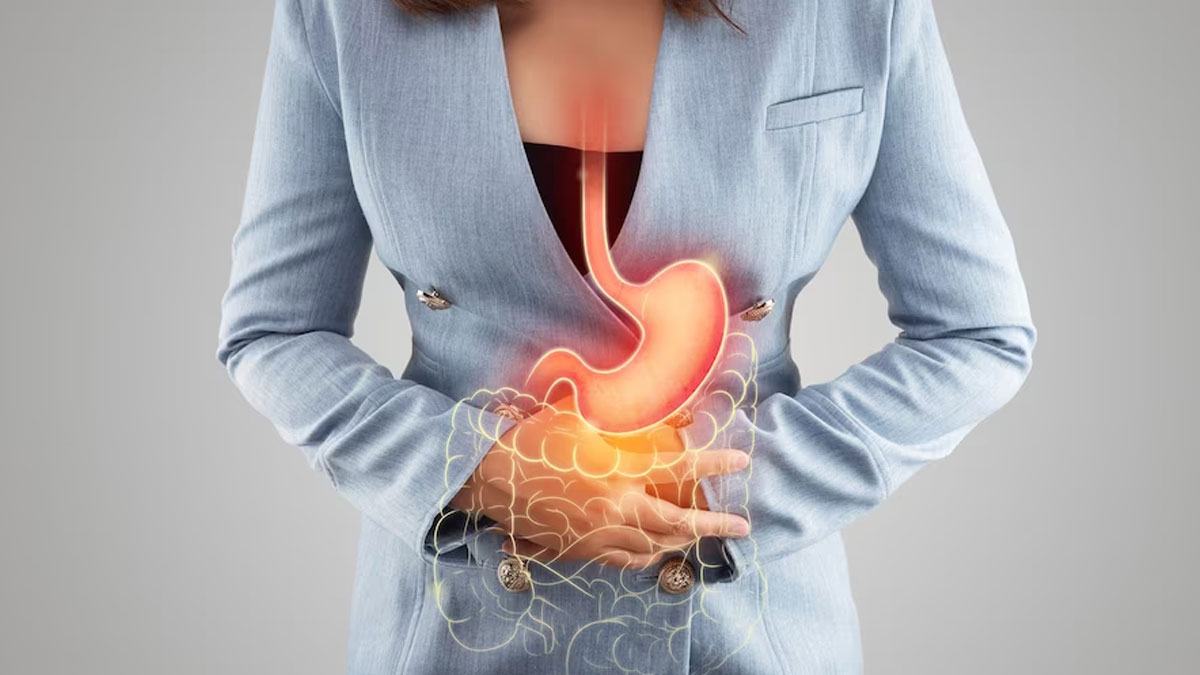
A sudden burning sensation in the stomach may not be alarming. However, if accompanied by other gastrointestinal issues like bloating, nausea, and loss of appetite, it could be a sign of a stomach ulcer. According to a study published in the Journal PLOS ONE, peptic ulcer disease affects 40 lakh people worldwide annually and has an estimated lifetime prevalence of 5−10% in the general population.
Table of Content:-
Speaking with OnlyMyHealth, Dr Krishanu Banik, Consultant-Gastroenterologist, Fortis Hospital, Anandapur, Kolkata, helps us understand the disease in detail.
Understanding Stomach Ulcer And Its Causes

A stomach ulcer, also known as gastric ulcer, is a sore that forms in the lining of the stomach, says Dr Banik. “An ulcer develops either in the stomach or the initial part of the small intestine, known as the duodenum. This occurs when the protective layer of mucus that lines the stomach is weakened, allowing the stomach acid to damage the underlying tissues,” he explains.
According to the doctor, stomach ulcers are caused by two factors: infection with a bacterium called Helicobacter pylori (H. pylori) and the use of Nonsteroidal Anti-Inflammatory Drugs (NSAIDs).
H. pylori infection is the most common cause of stomach ulcers. It occurs when the bacteria weakens the protective lining of the stomach, making it prone to acid damage. NSAIDs can irritate the stomach lining and increase the risk of ulcer formation. Dr Banik says that there may be other triggers, such as excessive alcohol consumption, smoking, prolonged stress, and certain medical conditions like Zollinger-Ellison syndrome. “It's important to note that individual susceptibility can vary, and not everyone exposed to these triggers will develop stomach ulcers,” he adds.
Common Symptoms Of Stomach Ulcer
Some of the common symptoms of stomach ulcers include:
- Mild abdominal pain
- A burning or gnawing sensation between the navel and the breastbone, also called hunger pain, which slowly builds up over 1-2 hours and then gradually decreases
- Pain that goes away or worsens after eating
- Bloating
- Nausea
- Vomiting
- Loss of appetite
- Weight loss
- A dark or tarry stool
Also Read: Can Leftover Rice Cause Food Poisoning? Expert Weighs In
How Long Can It Take For Stomach Ulcers To Heal?

According to Dr Banik, the time it takes for stomach ulcers to heal depends on various factors, including the size and severity of the ulcer, the individual’s healing abilities, and the effectiveness of the treatment. Generally, small ulcers may heal within a few weeks, while larger or more severe ulcers may take several months to heal completely.
Treatment Options
If you’re someone suffering from a stomach ulcer, your treatment could typically involve a combination of medications and lifestyle changes, says Dr Banik. Lifestyle modifications can aid in the healing process and help prevent ulcer recurrence. These may include avoiding irritants like NSAIDs and alcohol, quitting smoking, managing stress, and adopting a healthy diet.
Also watch this video
How we keep this article up to date:
We work with experts and keep a close eye on the latest in health and wellness. Whenever there is a new research or helpful information, we update our articles with accurate and useful advice.
Current Version